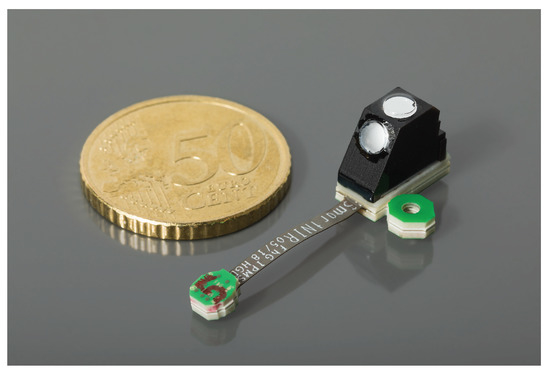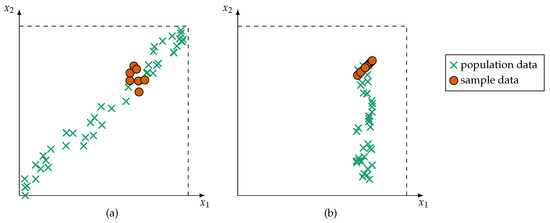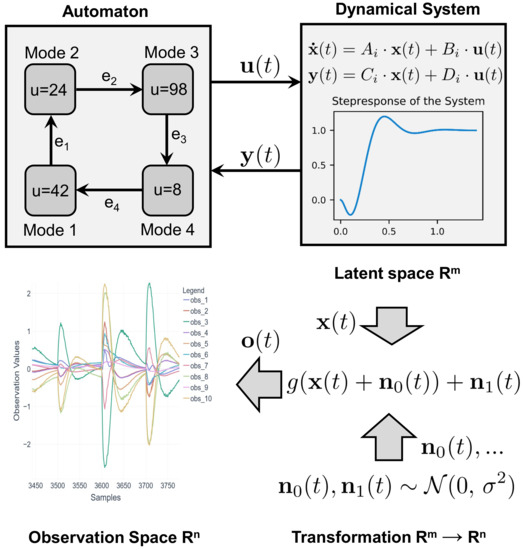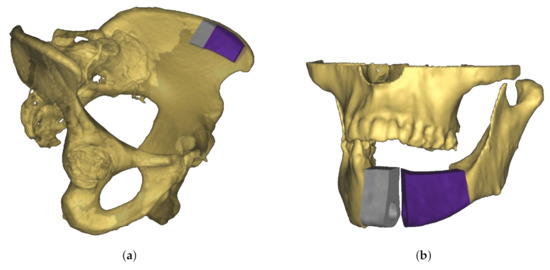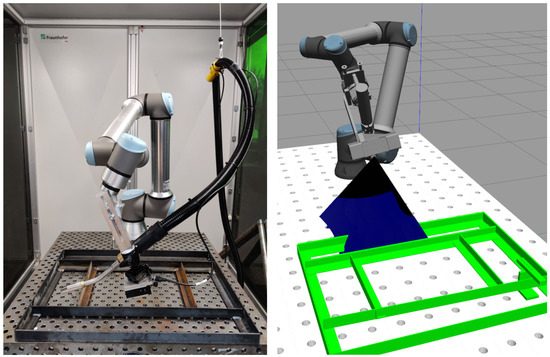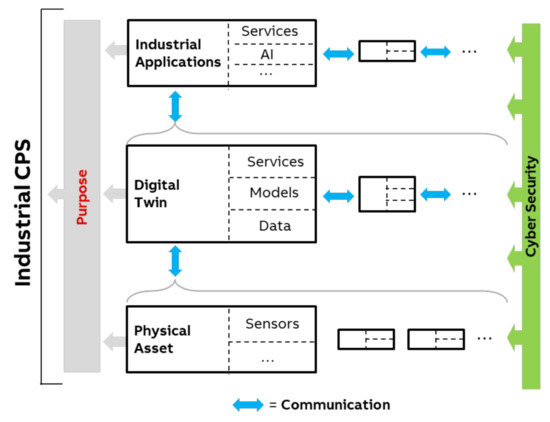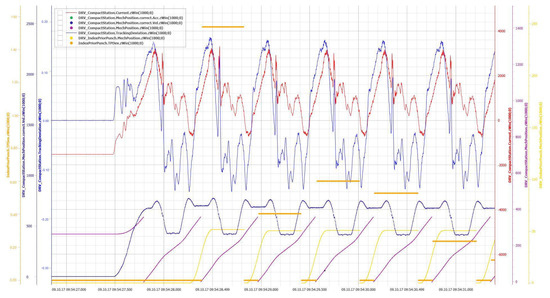Industrial Applications of Smart Sensors and Smart Data in Cyber-Physical Systems
Share This Topical Collection
Editors
 Prof. Dr. Alexander Maier
Prof. Dr. Alexander Maier
 Prof. Dr. Alexander Maier
Prof. Dr. Alexander Maier
E-Mail
Website
Collection Editor
Department of Engineering and Mathematics, Bielefeld University of Applied Sciences, 33619 Bielefeld, Germany
Interests: predictive maintenance; artificial intelligence; machine learning
 Prof. Dr. Michael Heizmann
Prof. Dr. Michael Heizmann
 Prof. Dr. Michael Heizmann
Prof. Dr. Michael Heizmann
E-Mail
Website
Collection Editor
Institute of Industrial Information Technology (IIIT), Karlsruhe Institute of Technology (KIT), Karlsruhe, Germany
Interests: image processing; automated visual inspection; machine vision; machine learning; multisensor fusion and information fusion
Topical Collection Information
Dear Colleagues,
Sensors and their data are the basis of most recent trends in the field of Cyber-Physical Systems (CPS) and the Internet of Things (IoT): artificial intelligence algorithms use sensor data, e.g. generated by process-embedded sensors, for industrial applications such as predictive maintenance or optimization. Assistance systems and robotics rely on sensors to interact with changing environments and sensors systems become more and more a platform for edge computing and for semantically annotated smart data. This collection addresses the methodological and technical buildings blocks of these trends. These trends have several key aspects which are addressed in this collection. One key element are new sensor architectures. This includes new measurement principles such as new vision systems, algorithms for sensor data processing and information fusion, the development towards edge-computing and also new ideas for a fast and automated integration of sensors into complex CPS. A second key topic is the usage of systems of sensors for an integrated interaction between machines and humans and new robotic applications. Furthermore, the issue welcomes methods for data semantics and the usage of these semantics for a faster CPS ramp-up and reconfiguration. Finally, the issue will discuss machine learning algorithms suited for CPS, the usage of learned models for optimization and typical artificial intelligence applications in the industrial domain.
Prof. Dr. Alexander Maier
Prof. Dr. Michael Heizmann
Collection Editors
Manuscript Submission Information
Manuscripts should be submitted online at www.mdpi.com by registering and logging in to this website. Once you are registered, click here to go to the submission form. Manuscripts can be submitted until the deadline. All submissions that pass pre-check are peer-reviewed. Accepted papers will be published continuously in the journal (as soon as accepted) and will be listed together on the collection website. Research articles, review articles as well as short communications are invited. For planned papers, a title and short abstract (about 100 words) can be sent to the Editorial Office for announcement on this website.
Submitted manuscripts should not have been published previously, nor be under consideration for publication elsewhere (except conference proceedings papers). All manuscripts are thoroughly refereed through a single-blind peer-review process. A guide for authors and other relevant information for submission of manuscripts is available on the Instructions for Authors page. Sensors is an international peer-reviewed open access semimonthly journal published by MDPI.
Please visit the Instructions for Authors page before submitting a manuscript.
The Article Processing Charge (APC) for publication in this open access journal is 2600 CHF (Swiss Francs).
Submitted papers should be well formatted and use good English. Authors may use MDPI's
English editing service prior to publication or during author revisions.
Keywords
- cyber-physical systems
- Internet of Things
- artificial intelligence
- sensor data
- machine learning
- digital twin
Published Papers (9 papers)
Open AccessArticle
SmartSpectrometer—Embedded Optical Spectroscopy for Applications in Agriculture and Industry
by
Julius Krause, Heinrich Grüger, Lucie Gebauer, Xiaorong Zheng, Jens Knobbe, Tino Pügner, Anna Kicherer, Robin Gruna, Thomas Längle and Jürgen Beyerer
Cited by 6 | Viewed by 3289
Abstract
The ongoing digitization of industry and agriculture can benefit significantly from optical spectroscopy. In many cases, optical spectroscopy enables the estimation of properties such as substance concentrations and compositions. Spectral data can be acquired and evaluated in real time, and the results can
[...] Read more.
The ongoing digitization of industry and agriculture can benefit significantly from optical spectroscopy. In many cases, optical spectroscopy enables the estimation of properties such as substance concentrations and compositions. Spectral data can be acquired and evaluated in real time, and the results can be integrated directly into process and automation units, saving resources and costs. Multivariate data analysis is needed to integrate optical spectrometers as sensors. Therefore, a spectrometer with integrated artificial intelligence (AI) called
SmartSpectrometer and its interface is presented. The advantages of the
SmartSpectrometer are exemplified by its integration into a harvesting vehicle, where quality is determined by predicting sugar and acid in grapes in the field.
Full article
►▼
Show Figures
Open AccessArticle
A Redundancy Metric Set within Possibility Theory for Multi-Sensor Systems
by
Christoph-Alexander Holst and Volker Lohweg
Cited by 7 | Viewed by 2519
Abstract
In intelligent technical multi-sensor systems, information is often at least partly redundant—either by design or inherently due to the dynamic processes of the observed system. If sensors are known to be redundant, (i) information processing can be engineered to be more robust against
[...] Read more.
In intelligent technical multi-sensor systems, information is often at least partly redundant—either by design or inherently due to the dynamic processes of the observed system. If sensors are known to be redundant, (i) information processing can be engineered to be more robust against sensor failures, (ii) failures themselves can be detected more easily, and (iii) computational costs can be reduced. This contribution proposes a metric which quantifies the degree of redundancy between sensors. It is set within the possibility theory. Information coming from sensors in technical and cyber–physical systems are often imprecise, incomplete, biased, or affected by noise. Relations between information of sensors are often only spurious. In short, sensors are not fully reliable. The proposed metric adopts the ability of possibility theory to model incompleteness and imprecision exceptionally well. The focus is on avoiding the detection of spurious redundancy. This article defines redundancy in the context of possibilistic information, specifies requirements towards a redundancy metric, details the information processing, and evaluates the metric qualitatively on information coming from three technical datasets.
Full article
►▼
Show Figures
Open AccessArticle
Generating Artificial Sensor Data for the Comparison of Unsupervised Machine Learning Methods
by
Bernd Zimmering, Oliver Niggemann, Constanze Hasterok, Erik Pfannstiel, Dario Ramming and Julius Pfrommer
Cited by 5 | Viewed by 2619
Abstract
In the field of Cyber-Physical Systems (CPS), there is a large number of machine learning methods, and their intrinsic hyper-parameters are hugely varied. Since no agreed-on datasets for CPS exist, developers of new algorithms are forced to define their own benchmarks. This leads
[...] Read more.
In the field of Cyber-Physical Systems (CPS), there is a large number of machine learning methods, and their intrinsic hyper-parameters are hugely varied. Since no agreed-on datasets for CPS exist, developers of new algorithms are forced to define their own benchmarks. This leads to a large number of algorithms each claiming benefits over other approaches but lacking a fair comparison. To tackle this problem, this paper defines a novel model for a generation process of data, similar to that found in CPS. The model is based on well-understood system theory and allows many datasets with different characteristics in terms of complexity to be generated. The data will pave the way for a comparison of selected machine learning methods in the exemplary field of unsupervised learning. Based on the synthetic CPS data, the data generation process is evaluated by analyzing the performance of the methods of the Self-Organizing Map, One-Class Support Vector Machine and Long Short-Term Memory Neural Net in anomaly detection.
Full article
►▼
Show Figures
Open AccessCommunication
Efficient Reject Options for Particle Filter Object Tracking in Medical Applications
by
Johannes Kummert, Alexander Schulz, Tim Redick, Nassim Ayoub, Ali Modabber, Dirk Abel and Barbara Hammer
Cited by 2 | Viewed by 2086
Abstract
Reliable object tracking that is based on video data constitutes an important challenge in diverse areas, including, among others, assisted surgery. Particle filtering offers a state-of-the-art technology for this challenge. Becaise a particle filter is based on a probabilistic model, it provides explicit
[...] Read more.
Reliable object tracking that is based on video data constitutes an important challenge in diverse areas, including, among others, assisted surgery. Particle filtering offers a state-of-the-art technology for this challenge. Becaise a particle filter is based on a probabilistic model, it provides explicit likelihood values; in theory, the question of whether an object is reliably tracked can be addressed based on these values, provided that the estimates are correct. In this contribution, we investigate the question of whether these likelihood values are suitable for deciding whether the tracked object has been lost. An immediate strategy uses a simple threshold value to reject settings with a likelihood that is too small. We show in an application from the medical domain—object tracking in assisted surgery in the domain of Robotic Osteotomies—that this simple threshold strategy does not provide a reliable reject option for object tracking, in particular if different settings are considered. However, it is possible to develop reliable and flexible machine learning models that predict a reject based on diverse quantities that are computed by the particle filter. Modeling the task in the form of a regression enables a flexible handling of different demands on the tracking accuracy; modeling the challenge as an ensemble of classification tasks yet surpasses the results, while offering the same flexibility.
Full article
►▼
Show Figures
Open AccessArticle
A Reinforcement Learning Approach to View Planning for Automated Inspection Tasks
by
Christian Landgraf, Bernd Meese, Michael Pabst, Georg Martius and Marco F. Huber
Cited by 11 | Viewed by 3978
Abstract
Manual inspection of workpieces in highly flexible production facilities with small lot sizes is costly and less reliable compared to automated inspection systems. Reinforcement Learning (RL) offers promising, intelligent solutions for robotic inspection and manufacturing tasks. This paper presents an RL-based approach to
[...] Read more.
Manual inspection of workpieces in highly flexible production facilities with small lot sizes is costly and less reliable compared to automated inspection systems. Reinforcement Learning (RL) offers promising, intelligent solutions for robotic inspection and manufacturing tasks. This paper presents an RL-based approach to determine a high-quality set of sensor view poses for arbitrary workpieces based on their 3D computer-aided design (CAD). The framework extends available open-source libraries and provides an interface to the Robot Operating System (ROS) for deploying any supported robot and sensor. The integration into commonly used OpenAI Gym and Baselines leads to an expandable and comparable benchmark for RL algorithms. We give a comprehensive overview of related work in the field of view planning and RL. A comparison of different RL algorithms provides a proof of concept for the framework’s functionality in experimental scenarios. The obtained results exhibit a coverage ratio of up to
illustrating its potential impact and expandability. The project will be made publicly available along with this article.
Full article
►▼
Show Figures
Open AccessArticle
Toward Smart Traceability for Digital Sensors and the Industrial Internet of Things
by
Sascha Eichstädt, Maximilian Gruber, Anupam Prasad Vedurmudi, Benedikt Seeger, Thomas Bruns and Gertjan Kok
Cited by 26 | Viewed by 3133
Abstract
The Internet of Things (IoT) is characterized by a large number of interconnected devices or assets. Measurement instruments in the IoT are typically digital in the sense that their indications are available only as digital output. Moreover, a growing number of IoT sensors
[...] Read more.
The Internet of Things (IoT) is characterized by a large number of interconnected devices or assets. Measurement instruments in the IoT are typically digital in the sense that their indications are available only as digital output. Moreover, a growing number of IoT sensors contain a built-in pre-processing system, e.g., for compensating unwanted effects. This paper considers the application of metrological principles to such so-called “smart sensors” in the IoT. It addresses the calibration of digital sensors, mathematical and semantic approaches, the communication of data quality and the meaning of traceability for the IoT in general.
Full article
►▼
Show Figures
Open AccessArticle
Developing Industrial CPS: A Multi-Disciplinary Challenge
by
Martin W. Hoffmann, Somayeh Malakuti, Sten Grüner, Soeren Finster, Jörg Gebhardt, Ruomu Tan, Thorsten Schindler and Thomas Gamer
Cited by 28 | Viewed by 3920
Abstract
Industrial Cyber–Physical System (CPS) is an emerging approach towards value creation in modern industrial production. The development and implementation of industrial CPS in real-life production are rewarding yet challenging. This paper aims to present a concept to develop, commercialize, operate, and maintain industrial
[...] Read more.
Industrial Cyber–Physical System (CPS) is an emerging approach towards value creation in modern industrial production. The development and implementation of industrial CPS in real-life production are rewarding yet challenging. This paper aims to present a concept to develop, commercialize, operate, and maintain industrial CPS which can motivate the advance of the research and the industrial practice of industrial CPS in the future. We start with defining our understanding of an industrial CPS, specifying the components and key technological aspects of the industrial CPS, as well as explaining the alignment with existing work such as Industrie 4.0 concepts, followed by several use cases of industrial CPS in practice. The roles of each component and key technological aspect are described and the differences between traditional industrial systems and industrial CPS are elaborated. The multidisciplinary nature of industrial CPS leads to challenges when developing such systems, and we present a detailed description of several major sub-challenges that are key to the long-term sustainability of industrial CPS design. Since the research of industrial CPS is still emerging, we also discuss existing approaches and novel solutions to overcome these sub-challenges. These insights will help researchers and industrial practitioners to develop and commercialize industrial CPS.
Full article
►▼
Show Figures
Open AccessArticle
Smart Node Networks Orchestration: A New E2E Approach for Analysis and Design for Agile 4.0 Implementation
by
Annalisa Bertoli, Andrea Cervo, Carlo Alberto Rosati and Cesare Fantuzzi
Cited by 5 | Viewed by 2287
Abstract
The field of cyber-physical systems is a growing IT research area that addresses the deep integration of computing, communication and process control, possibly with humans in the loop. The goal of such area is to define modelling, controlling and programming methodologies for designing
[...] Read more.
The field of cyber-physical systems is a growing IT research area that addresses the deep integration of computing, communication and process control, possibly with humans in the loop. The goal of such area is to define modelling, controlling and programming methodologies for designing and managing complex mechatronics systems, also called industrial agents. Our research topic mainly focuses on the area of data mining and analysis by means of multi-agent orchestration of intelligent sensor nodes using internet protocols, providing also web-based HMI visualizations for data interpretability and analysis. Thanks to the rapid spreading of IoT systems, supported by modern and efficient telecommunication infrastructures and new decentralized control paradigms, the field of service-oriented programming finds new application in wireless sensor networks and microservices paradigm: we adopted such paradigm in the implementation of two different industrial use cases. Indeed, we expect a concrete and deep use of such technologies with 5G spreading. In the article, we describe the common software architectural pattern in IoT applications we used for the distributed smart sensors, providing also design and implementation details. In the use case section, the prototypes developed as proof of concept and the KPIs used for the system validation are described to provide a concrete solution overview.
Full article
►▼
Show Figures
Open AccessArticle
Process-Driven and Flow-Based Processing of Industrial Sensor Data
by
Klaus Kammerer, Rüdiger Pryss, Burkhard Hoppenstedt, Kevin Sommer and Manfred Reichert
Cited by 15 | Viewed by 3862
Abstract
For machine manufacturing companies, besides the production of high quality and reliable machines, requirements have emerged to maintain machine-related aspects through digital services. The development of such services in the field of the Industrial Internet of Things (IIoT) is dealing with solutions such
[...] Read more.
For machine manufacturing companies, besides the production of high quality and reliable machines, requirements have emerged to maintain machine-related aspects through digital services. The development of such services in the field of the Industrial Internet of Things (IIoT) is dealing with solutions such as effective condition monitoring and predictive maintenance. However, appropriate data sources are needed on which digital services can be technically based. As many powerful and cheap sensors have been introduced over the last years, their integration into complex machines is promising for developing digital services for various scenarios. It is apparent that for components handling recorded data of these sensors they must usually deal with large amounts of data. In particular, the labeling of raw sensor data must be furthered by a technical solution. To deal with these data handling challenges in a generic way, a sensor processing pipeline (SPP) was developed, which provides effective methods to capture, process, store, and visualize raw sensor data based on a processing chain. Based on the example of a machine manufacturing company, the SPP approach is presented in this work. For the company involved, the approach has revealed promising results.
Full article
►▼
Show Figures
Planned Papers
The below list represents only planned manuscripts. Some of these
manuscripts have not been received by the Editorial Office yet. Papers
submitted to MDPI journals are subject to peer-review.
Title: Towards smart traceability for digital sensors and the industrial Internet of Things
Authors: S. Eichstädt; M. Gruber; B. Seeger; Th. Bruns
Affiliation: Physikalisch-Technische Bundesanstalt, Braunschweig and Berlin, Germany







